calsfoundation@cals.org
Fort Smith National Historic Site
Fort Smith National Historic Site is a unit of the National Park Service located in downtown Fort Smith (Sebastian County) on the Arkansas River. By preserving the remains of two military posts, the federal courthouse, and two jails, the park interprets how Fort Smith helped keep the peace in Indian Territory during the nineteenth century.
In the early days, Belle Point, which later became Fort Smith, was used by French fur trappers for a rendezvous point. Chosen because the converging Poteau and Arkansas rivers made it accessible, this location became an important and strategic location for keeping peace in the West. As early as 1808, approximately 2,000 Cherokee left their ancestral homeland and began to move from the Southeast and into northern Arkansas due to the pressure by the federal government. However, the Osage who used the land for hunting began to resent this situation. The food supply started to diminish due to an increase in population, resulting in a war between the two tribes. As a result of the United States’ Indian policy, the federal government had to find a solution to the problem it had created. In order to remedy the situation, sixty-four riflemen were sent to Belle Point in 1817 to keep the peace between the Osage and Cherokee. Miraculously, the soldiers managed to do so without resorting to violence while making roads, planting a garden, building Fort Smith, and dealing with white settlers. By 1822, the Osage and Cherokee made peace, and in 1824, the post was abandoned in favor of a more strategic location up river.
Beginning in 1831, the Arkansas River became part of the water route for the Trail of Tears. During the early part of the forced removal of the Southeastern tribes from their homelands, Fort Smith’s log buildings held supplies for the Choctaw. Soon after Arkansas statehood, Arkansas citizens successfully lobbied for the construction of a new garrison at Fort Smith. Finished in 1846, the new Fort Smith became one of the rallying points and supply depots for troops headed to the Mexican War. Later, during the Civil War, Union soldiers abandoned Fort Smith, leaving it to Confederate troops until 1863, when Union general James G. Blunt took the fort without opposition.
In 1871, the military chapter of Fort Smith closed with the garrison’s decommissioning. The remaining buildings were turned over in 1872 to the Federal Court for the Western District of Arkansas and the Indian Territory. At this point, the old enlisted barracks became the courthouse and jail. Charged with keeping the peace, the Fort Smith federal court tried crimes from whisky peddling to murder. In 1875, Isaac C. Parker was appointed judge by President Ulysses S. Grant. While Parker served a twenty-one-year tenure on the bench, seventy-nine men were executed for capital crimes. During this turbulent time, at least seventy deputy marshals died in the line of duty, many of whom left behind families that had depended on their support. The court maintained law and order in Indian Territory until 1896, when its jurisdiction was reduced to the western half of Arkansas, leaving behind a legacy of fascinating history.
In the 1950s, the City of Fort Smith began to reclaim the property, and by 1957, Judge Parker’s courtroom was restored. In 1961, the site of the two forts, courthouse, and jail was accepted by President John F. Kennedy and turned over to the National Park Service; it was dedicated in 1964 by Lady Bird Johnson, the first lady. Today, the foundations of the 1817 fort are preserved and visible, along with a beautiful view of the Poteau and Arkansas rivers. The park has a paved trail along the river where the site of the first fort and a Trail of Tears overlook can be viewed. The commissary of the second fort is still standing and open to the public. Structures such as the walls, officer’s quarters, and guardhouse no longer remain but are clearly marked in cement, brick, and stone. The other remaining historic structure is the barracks/courthouse and jail, which can be toured by visitors. Though changed significantly in 1889 with the addition of a new jail wing, the barracks section of the building still retains some of the federal period style. In 2000, the entire building was renovated, thereby opening the two jails to the public and improving interpretive exhibits.
The Fort Smith National Historic Site was listed as a National Historic Landmark on December 19, 1960, and listed on the National Register of Historic Places on March 7, 1986.
For additional information:
Akins, Jerry. Hangin’ Times in Fort Smith: A History of Executions in Judge Parker’s Court. Little Rock: Butler Center Books, 2012.
Bearss, Edwin C. Fort Smith: Little Gibraltar on the Arkansas. Norman: University of Oklahoma, 1969.
———. “Law Enforcement at Fort Smith: 1871–1876.” National Park Service. http://npshistory.com/publications/fosm/law_enforcement.pdf (accessed January 18, 2023).
Fort Smith National Historic Site. National Park Service. http://www.nps.gov/fosm (accessed January 18, 2023).
“Fort Smith National Historic Site.” National Register of Historic Places nomination form. On file at Arkansas Historic Preservation Program, Little Rock, Arkansas. Online at http://www.arkansaspreservation.com/National-Register-Listings/PDF/SB0408.nr.pdf (accessed January 18, 2023).
Higgins, Billy. “Fort Smith: Vanguard of Western Frontier History.” Fort Washington, PA: Eastern National, 2007.
Maher, Daniel. Mythic Frontiers: Remembering, Forgetting, and Profiting from Cultural Heritage Tourism. Gainesville: University Press of Florida, 2016.
Rosenbaum, Bethany H. “Promise and Practice: Toward an Expanded, Integrated, Collaborative Narrative on American Indians in our National Parks.” PhD diss., University of Arkansas, 2019.
Jeremy Lynch
Fort Smith National Historic Site
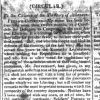
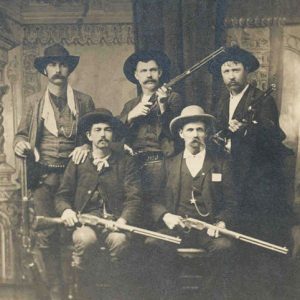 Ned Christie Posse
Ned Christie Posse 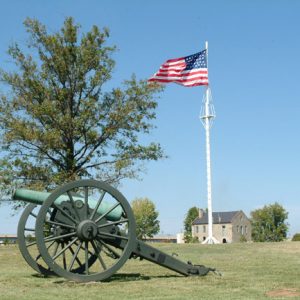 Fort Smith National Historic Site
Fort Smith National Historic Site  Fort Smith National Historic Site
Fort Smith National Historic Site 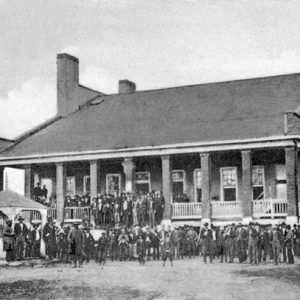 Fort Smith Jail
Fort Smith Jail  Fort Smith Gallows
Fort Smith Gallows 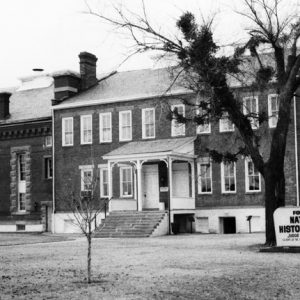 Fort Smith National Historic Site
Fort Smith National Historic Site  Fort Smith National Historic Site Ad
Fort Smith National Historic Site Ad 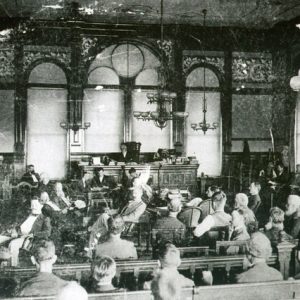 U.S. Courtroom at Fort Smith
U.S. Courtroom at Fort Smith 




Comments
No comments on this entry yet.